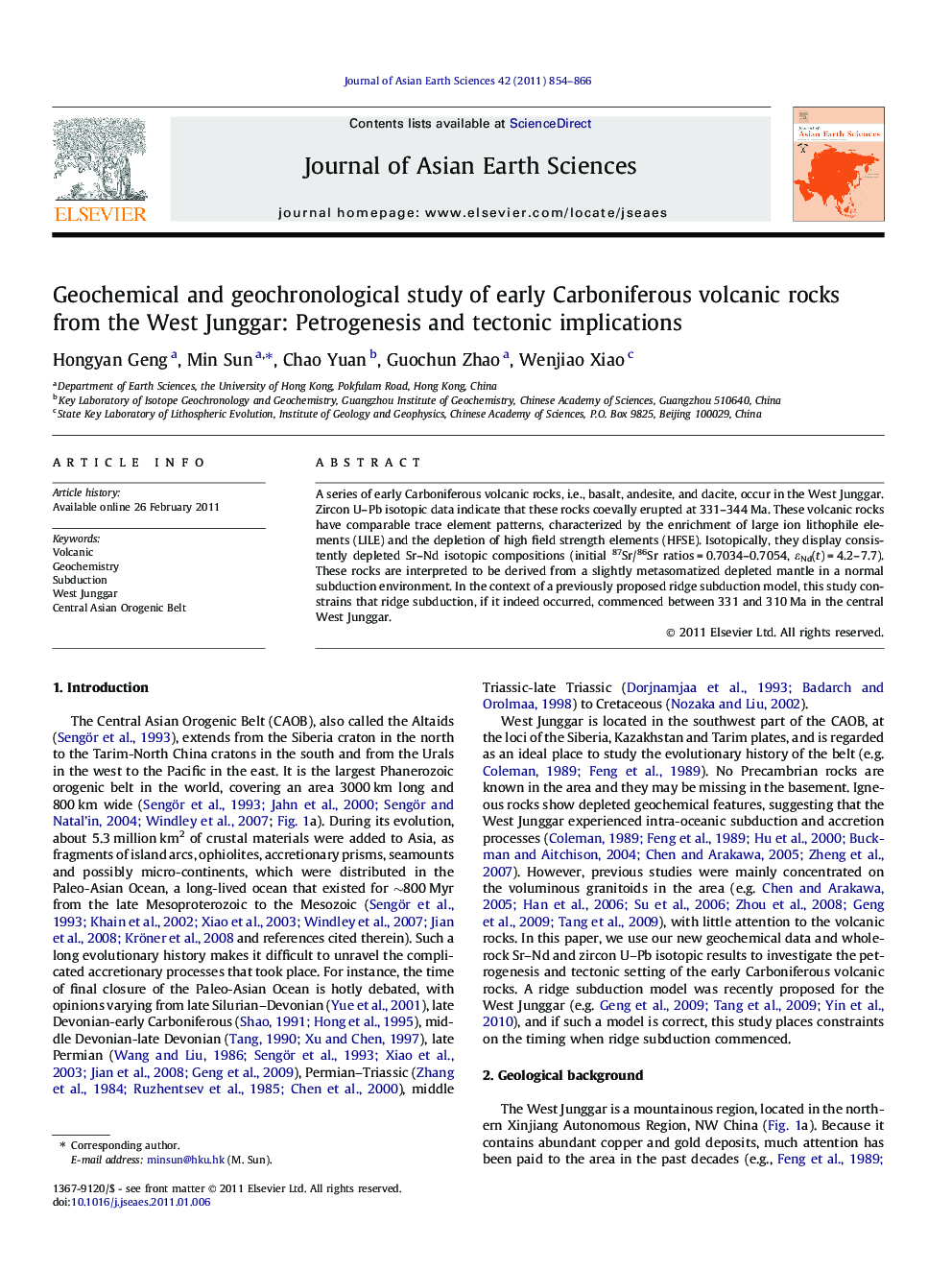| Article ID | Journal | Published Year | Pages | File Type |
|---|---|---|---|---|
| 4731718 | Journal of Asian Earth Sciences | 2011 | 13 Pages |
A series of early Carboniferous volcanic rocks, i.e., basalt, andesite, and dacite, occur in the West Junggar. Zircon U–Pb isotopic data indicate that these rocks coevally erupted at 331–344 Ma. These volcanic rocks have comparable trace element patterns, characterized by the enrichment of large ion lithophile elements (LILE) and the depletion of high field strength elements (HFSE). Isotopically, they display consistently depleted Sr–Nd isotopic compositions (initial 87Sr/86Sr ratios = 0.7034–0.7054, εNd(t) = 4.2–7.7). These rocks are interpreted to be derived from a slightly metasomatized depleted mantle in a normal subduction environment. In the context of a previously proposed ridge subduction model, this study constrains that ridge subduction, if it indeed occurred, commenced between 331 and 310 Ma in the central West Junggar.
Research highlights► Early Carboniferous basalt, andesite, dacite have the zircon U–Pb age of 331–340 Ma. ► Basalt, andesite and dacite display enriched LILE, depleted HFSE patterns. ► Basalt, andesite and dacite have depleted Sr–Nd isotopic compositions. ► Basalt, andesite and dacite derived from a slightly metasomatized depleted mantle. ► Ridge subduction probably commenced between 331 and 310 Ma in the West Junggar.
